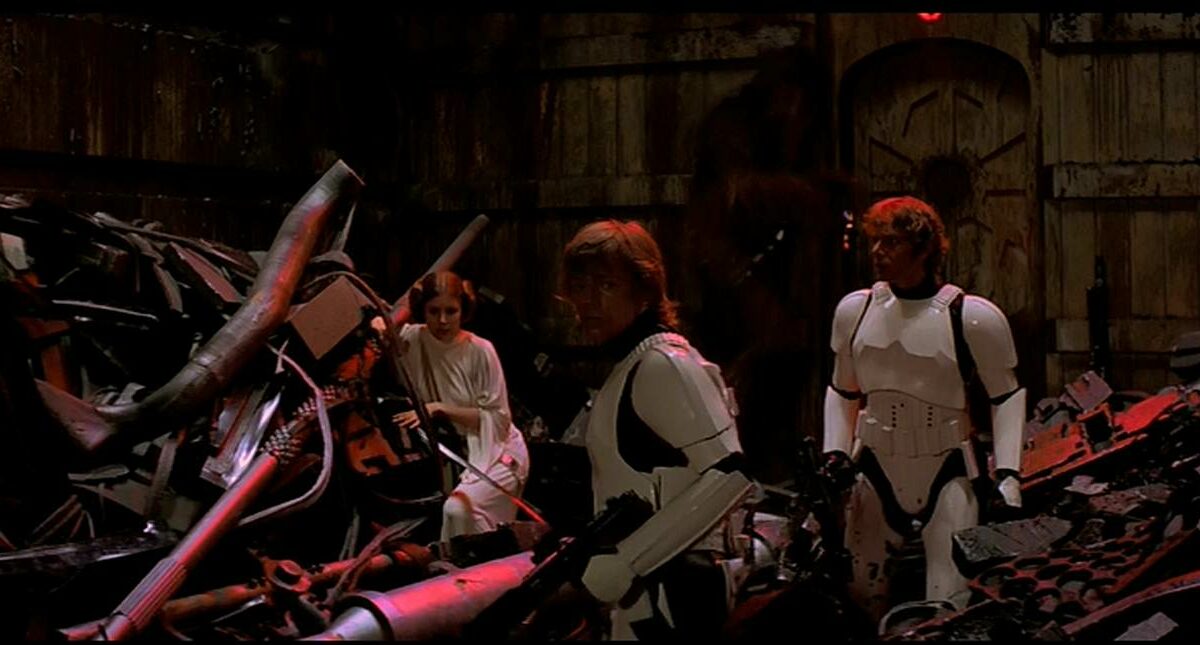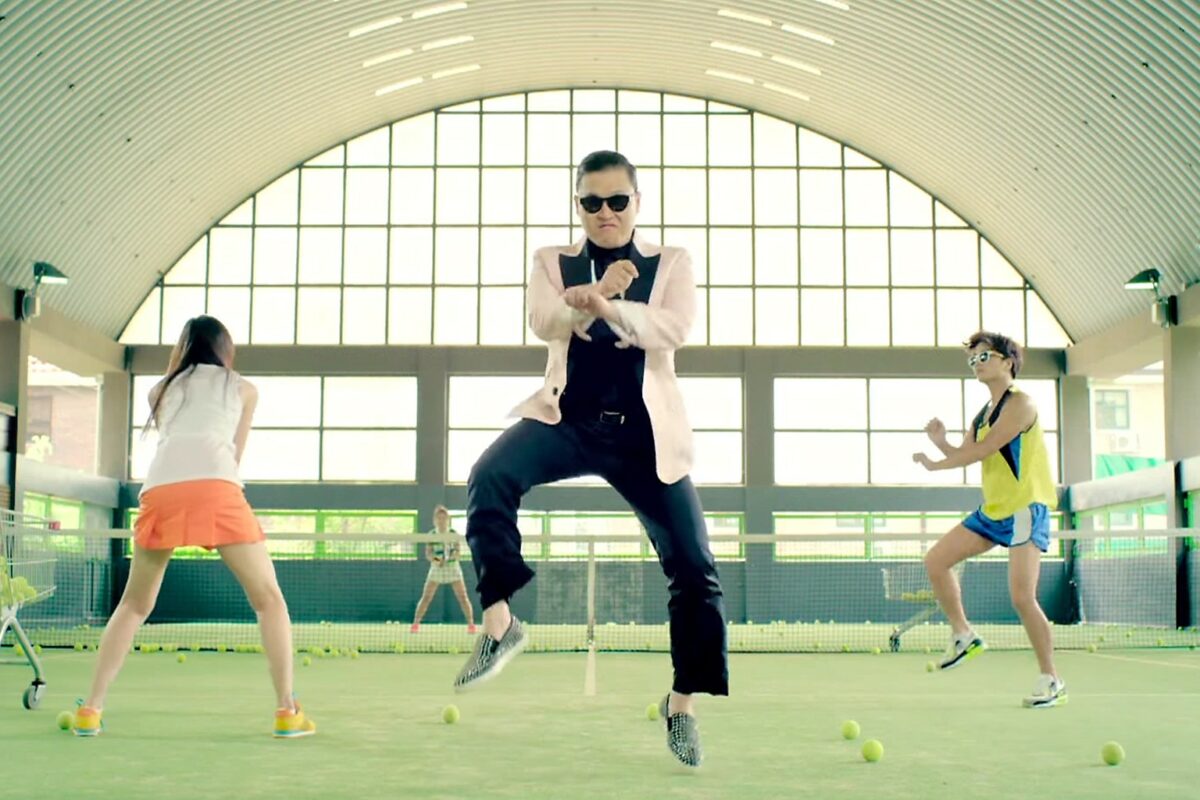Our senses are constantly taking in a vast amount of data, such as the words on this page, the color of C3PO, the smell from the cup of coffee on your desk, the sounds of conversations around you (which we know we shouldn’t be listening in on, but which we can’t completely ignore).
Although all this data is being taken in, it isn’t written automatically onto a memory ‘hard drive’, but gets sorted in different ways, assigned a level of importance, and only gets transferred if we really ‘need to know’ through a process called consolidation. If we suffer a system crash before consolidation, then we won’t remember any of it at all, which is sometimes good and sometimes bad.
The importance of sensory data depends on the meaning that data has for us, and specifically how well it can help us to make specific and accurate predictions about future outcomes. Put another way, prediction is all about understanding cause and effect, which is also the subject of stories.
Thus, meaning is critically linked to emotional state, social and environmental context and the brain’s reward system that powers our learning. Emotions are the ‘markers’ of importance, while con- text makes information specific enough to provide predictive power, helping the brain to learn new and better ways to navigate events (with better emotional outcomes).
Richard Restak writes about context, ‘Within the brain, things are always evaluated within a specific context’. Context is the key to meaning and the secret of the power of story. Similarly, Daniel Gilbert writes about emotion, ‘Feelings don’t just matter, they are what mattering means’, while Steven Pinker has written, ‘Emotions are mechanisms that set the brain’s highest goals’.
Stories are powerful ways for brands to transmit meaning, containing context, action and emotional reward (cause, behavior and effect). A story contains all the information the brain needs to make that information useful in making predictions. The meaning of a story is not necessarily diminished by the realness of the events. Imaginary stories are still powerful tools for mental simulation of ‘scenarios’ that help the brain to increase its predictive powers, and many have argued that one of the greatest gifts of humanity is the ability to create such mental simulations in order to imagine situations and events that have never been experienced.
This is how children learn from fairytales and stories. For example, in many fairytales, children are thrown into a world where their parents are no longer there to help them. The simulation of such stories helps us imagine a world where we cannot rely on our parents to help us, and have to learn to look after ourselves. Arguably, the common theme of the majority of fairytales, myths and legends, is the story of growing up. This is what Joseph Campbell called the ‘monomyth’, which he elaborated with examples from cultures all around the world.
Story allowed early humans to imagine dangerous experiences without having to live through them. They have become a useful way to explore our own minds and the minds of others.
Story And Myth
Joseph Campbell and others have argued that the monomyth or ‘hero’s journey’ is a common pattern found in numerous myth across cultures and time (he borrowed the term from James Joyce’s Finnegan’s Wake). The pattern consists of fundamental structures and stages, which he described in The Hero with a Thousand Faces in this way: ‘A hero ventures forth from the world of common day into a region of supernatural wonder: fabulous forces are there encountered and a decisive victory is won: the hero comes back from this mysterious adventure with the power to bestow boons on his fellow man’.
The narratives of Buddha, Moses and Jesus Christ have all been described in terms of the monomyth, as well as epic stories such as Gilgamesh and The Odyssey. Campbell argued that classic myths from all cultures followed this basic pattern. The ‘monomyth’ is a universal ‘archetype’. Campbell’s writings have been very influential on Hollywood, most notably with George Lucas and Star Wars. For example, the plot of Star Wars follows precisely the flow of the monomyth, as you can see here:
| The Hero’s Journey | Star Wars |
| The hero exists in an ordinary world | Luke Skywalker is a bored farm boy, dreaming of the space academy |
| He gets a call to adventure | Luke sees the distress hologram from Princess Leia |
| He almost refuses | Luke delivers the message and decides to go home |
| The wise elder (Guru) advises him to heed the call | Obi-Wan advises Luke to come with him |
| He enters the special world | Luke follows Obi-Wan to the cantina |
| Where he encounters tests and discovers allies and enemies | Luke meets Han Solo, they escape from imperial stormtroopers, jump into hyperspace and emerge in a meteor storm |
| He enters the inmost cave | Luke and friends are pulled into the Death Star |
| Where he encounters the supreme ordeal | Luke and friends are trapped in the ‘trash masher’ and Obi-Wan is killed by Darth Vader |
| He seizes the sword | Luke gets the plan to the Death Star |
| Takes the road back | Luke and friends are pursued by Darth Vader |
| Almost dies, but is resurrected | Despite being wounded, Luke hits the spot and destroys the Death Star |
| And returns with the elixir | Luke learns not to rely on machines, but to ‘trust the force’ and is transformed into a hero |
Although he has many followers, some believe that the monomyth is too simplistic in its interpretation of archetypal stories. Most famously, Christopher Booker spent many years writing The Seven Basic Plots, which outline seven archetypal story structures, including comedy and tragedy that go back to Aristotle’s Poetics. The seven are summarized here:
| Archetypal Plot | Examples |
| Killing the monster | Jack and the Beanstalk, Little Red Riding Hood, James Bond |
| Rags to riches | Aladdin, Cinderella, Shrek |
| Quest | The Odyssey, Indiana Jones, Star Trek |
| Voyage and return | Treasure Island, Peter Rabbit, The Wizard of Oz |
| Comedy | Lysistrata, Pride and Prejudice, Some Like It Hot |
| Tragedy | Hamlet, Madame Bovary, American Beauty |
| Rebirth | The Frog Prince, Beauty and the Beast, The Lion King |
Joseph Campbell was a student of Carl Jung who popularized the idea of archetypes more than anyone else in the last century, although the idea goes back to antiquity. Plato’s ideal forms and ‘allegory of the cave’ have much in common with ideas of archetypes. Campbell wrote that ‘the concept of archetypes was borrowed by Jung from classic sources, including Cicero, Pliny and Augustine. Adolf Bastian called them “Elementary Ideas”. In Sanskrit, they were called “subjectively known forms”; and in Australia, they were known as the “Eternal Ones of the Dream”.’
Jung wrote extensively about such archetypes as the anima, animus, self, shadow and persona as different aspects of human psychology. He also wrote about the more mythical and cultural aspects of archetypes like the mother, child and trickster.
As well as stories and metaphors, the word archetype often refers to characters that have common currency across cultures and time. Jung himself defined archetypes as, ‘Forms or images of a collective nature which occur practically all over the earth as constituents of myths and at the same time as individual products of unconscious origin’.
The Oxford English Dictionary defines archetype as, ‘A symbol, theme, setting or character-type that recurs in different times and places in myth, literature, folklore, dreams and rituals so frequently or prominently as to suggest that it embodies some essential element of “universal” human experience.’ My preferred definition of archetype comes from Jon Howard-Spink who wrote. ‘An archetype is a universally familiar character or situation that transcends time, place, culture, gender and age. It represents an eternal truth.’
Contributed to Branding Strategy Insider by: Neil Gains, excerpted from his book, Brand Essense: Using sense, symbol and story to design brand identity, with permission from Kogan Page publishing.
The Blake Project Can Help: The Strategic Brand Storytelling Workshop
Branding Strategy Insider is a service of The Blake Project: A strategic brand consultancy specializing in Brand Research, Brand Strategy, Brand Licensing and Brand Education




